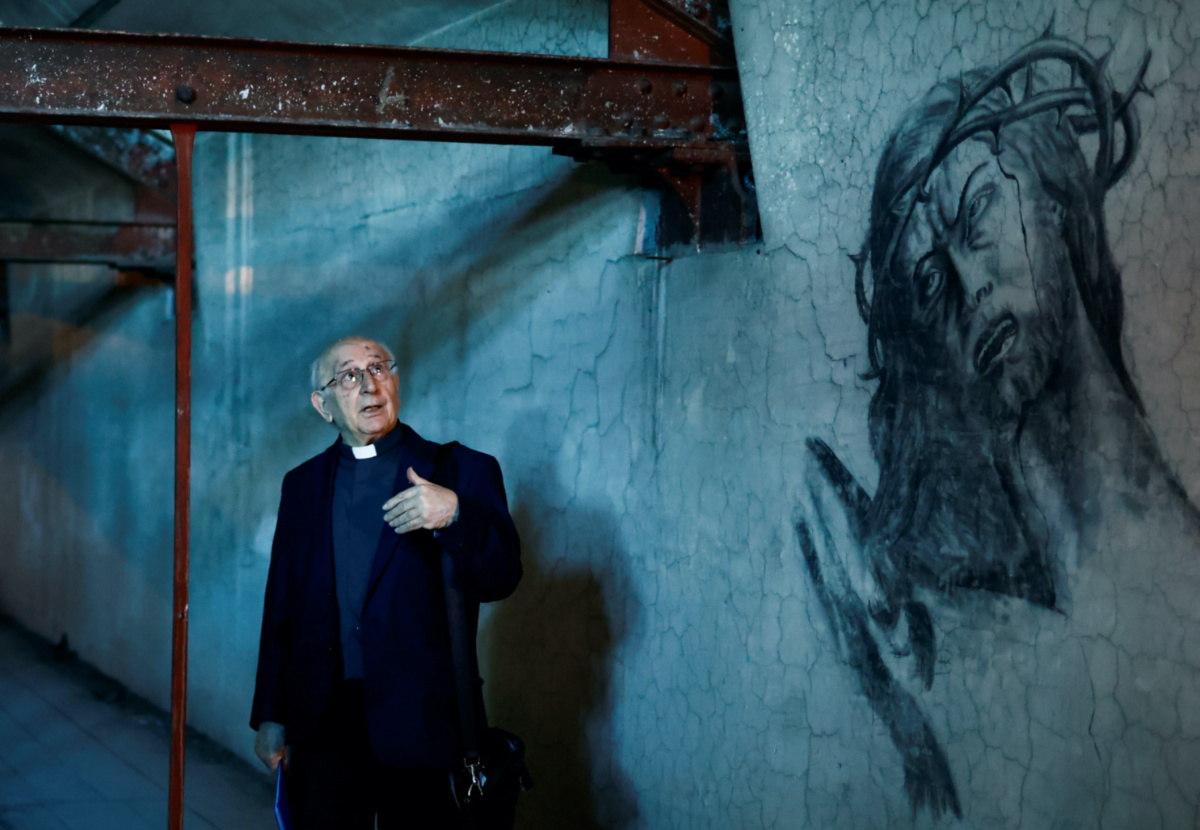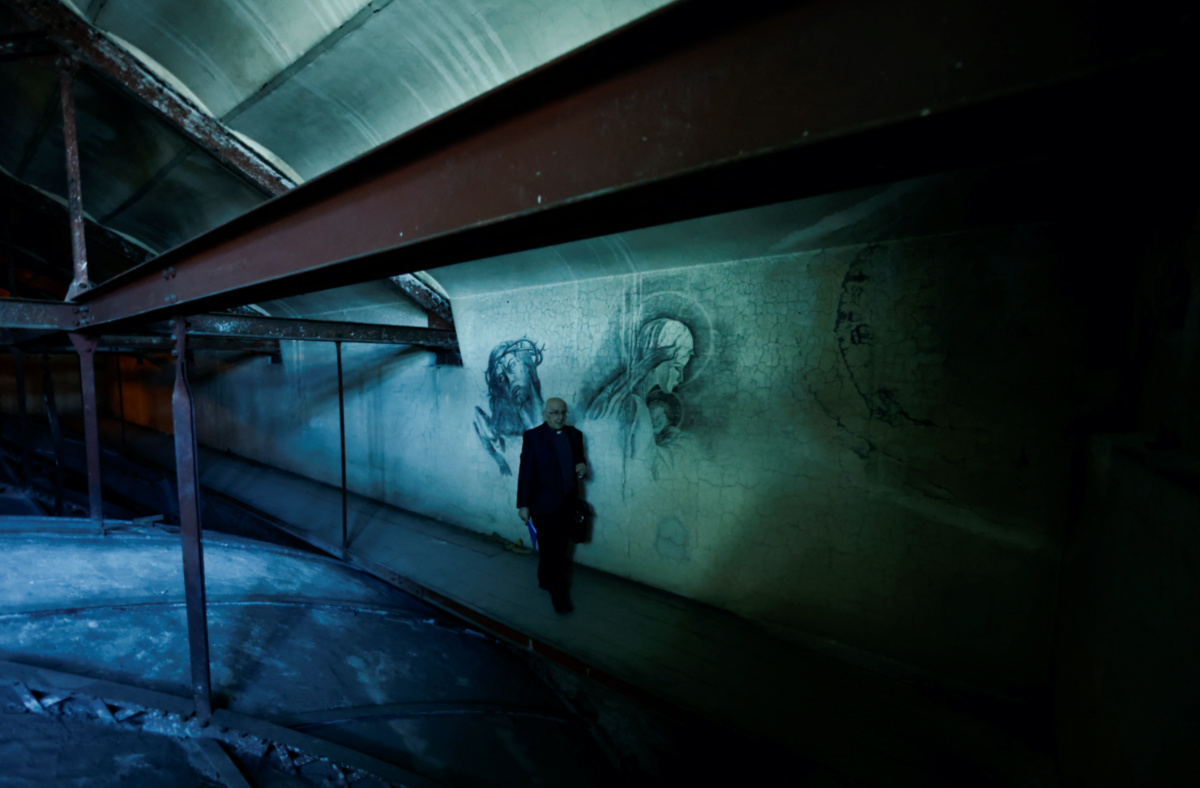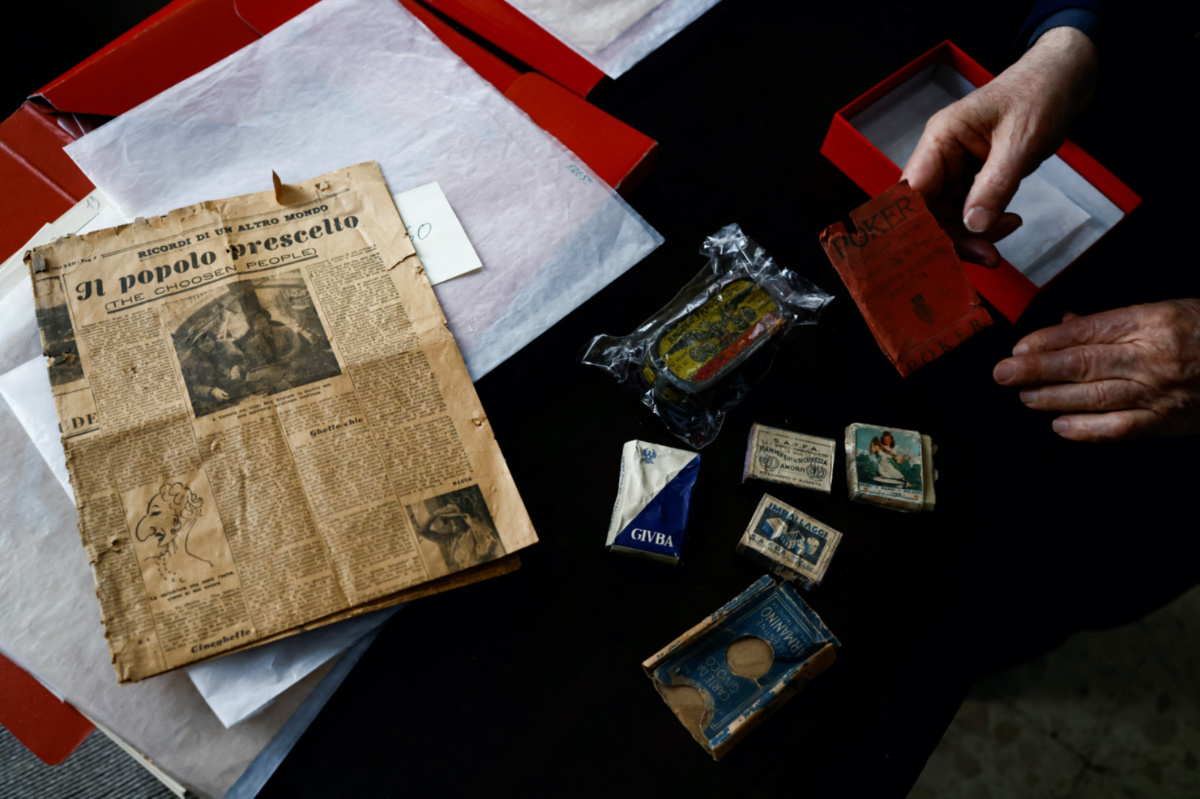Rome, Italy
Reuters
The church of San Gioacchino in Rome is full of frescoes, mosaics, and intricate stained glass windows, but perhaps its real masterpieces are charcoal wall drawings hidden away in its attic.
The drawings were done by one of 35 men – including Jews, anti-Fascist Christians, and military defectors – who were hidden in the attic during the Nazi occupation of Rome in World War II, some for as long as six months.

Father Ezio Marcelli, 90, looks at a graffiti that he discovered in the attic of the San Gioacchino church, where 35 people hid over nine months during the Nazi-fascist occupation of Rome between 1943-1944 and left their testimony of isolation and suffering through graffiti on the walls, in Rome, Italy, on 3rd May. PICTURE: Reuters/Yara Nardi
Father Ezio Marcelli discovered the drawings in 1984, 40 years after allied soldiers liberated Rome from Nazi occupiers in June, 1944. He remembered hearing from an older priest that people were hidden in the church during the war and began looking in the parish archives for clues.
“I managed to find this hiding place. We made this extraordinary discovery,” he said. “I was very emotional.”
“The meaning of what happened here, of people being persecuted, hunted down to be sentenced to death, still has a real significance today,” Marcelli said.
Despite his 90 years, Marcelli fearlessly climbs the external spiral staircase leading to the attic.
“We must always be vigilant and careful so that no one can ever again do such evil actions,” he said, taking visitors through a secret passage that was once bricked up to conceal the people inside from possible Nazi raids.
The three larger-than-life drawings on the walls, done in charcoal pencil, show Jesus with a crown of thorns, a Madonna and child, and a modern-day man sitting on a simple chair with his head in his hands. This is likely to be a portrait of one of the fugitives.

Father Ezio Marcelli, 90, walks past the graffiti that he discovered in the attic of the San Gioacchino church, where 35 people hid over nine months during the Nazi-fascist occupation of Rome between 1943-1944 and left their testimony of isolation and suffering through graffiti on the walls, in Rome, Italy, on 3rd May. PICTURE: Reuters/Yara Nardi.
While they are not signed, Marcelli said they were almost certainly done by Luigi de Simone because the archives also contained sketches on sheets of paper that were signed by him.
Marcelli also found a an old pack of cigarettes, playing cards, matches, an empty wine flask and a copy of a 1944 Rome newspaper with an anti-Semitic article – a time capsule from one of Italy’s darkest periods.
The men were hidden between 3rd November, 1943, and 7th June, 1944, with an average of 15 at any one time. Several stayed for the entire period. A convent of nuns across the street sheltered women.
The fugitives entered and left the attic through a rose window, usually under the cover of darkness. The internal entrance to the attic was bricked up to prevent them being discovered.

A general view of items that were discovered by father Ezio Marcelli, 90, in the attic of the San Gioacchino church, where 35 people hid over nine months during the Nazi-fascist occupation of Rome between 1943-1944 and left their testimony of isolation and suffering through graffiti on the walls, in Rome, Italy, on 3rd May. PICTURE: Reuters/Yara Nardi
Through the window, they received food, clothing and handed over their waste to their protectors, who included a priest, a nun and several lay members of the parish. Notes to and from family members were passed though a small hole in the ceiling.
All involved swore a pact of secrecy and developed a signal system of flashing lights to warm the men to be silent in case of a possible raid by Nazis, who were targeting religious institutions.
In 1995, Israel honoured the parish’s wartime pastor, Father Antonio Dressino, and its lay sacristan, Pietro Lestini, as being Righteous Among the Nations for saving Jews.





